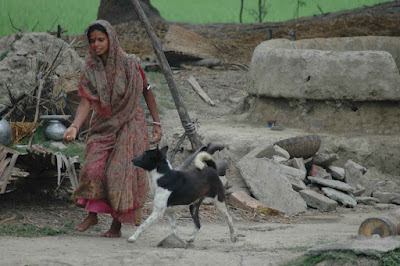


The photo on top is of the late Trixie, a very beautiful INDog owned for many years by Lt Col Gautam Das (retd). Colonel Das is a great Indian dog enthusiast and a member of Primitive and Aboriginal Dogs Society (PADS). He was promoting the cause of Indian native dog recognition long before I got into the act. In fact, the name "INDog" was coined by him and has been used by a number of primitive dog experts for some time now.
Colonel Das is a great fan of Indian pure breeds too - we all hope INDogs will join that category some day! I love these childhood photos of him with his first dog Piki, an Apso from a high Himalayan village in the Spiti area of Himachal Pradesh. (Incidentally, the Apso is really an Indo-Tibetan breed, and not just Tibetan).




















